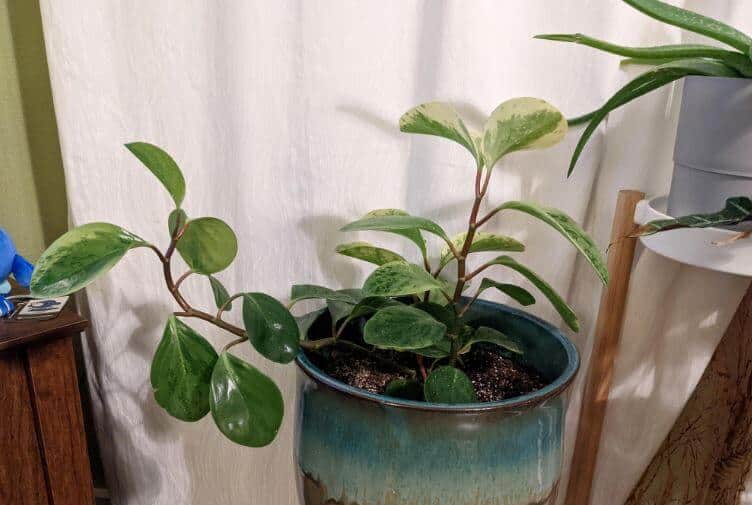Last Updated on September 9, 2023 by a Friendly Gardener
Rubber plants are glorious creatures and can act as a focal point to your indoor décor whether positioned in a home, office, or lobby. Rubber plants, aptly botanically named Ficus elasticus, are indeed elastic in their growth habits. But how elastic is okay? One problem commonly encountered by rubber plant parents is that their plant grows sideways.
The Rubber Plant
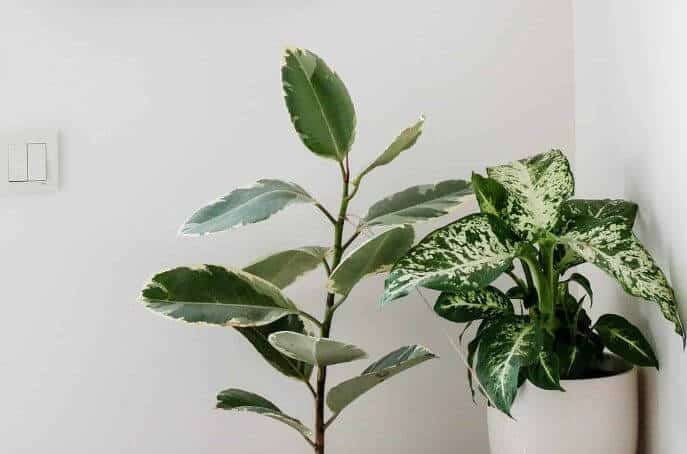
The Ficus genus features more than 850 species which are commonly referred to as figs. Some have fruit that can be eaten, while others are simply beautiful to behold. Such is the Ficus elasticus or rubber tree.
No longer utilized for the production of rubber, this plant boasts richly colored foliage and is an aggressive grower. It prefers a rich, moist, well-draining soil bed, so a good dose of bark or perlite in your soil mix is ideal. With a good, full sunlight supply will grow at a pretty astounding rate.
They do not do well in waterlogged soil or spots with little airflow. Environmental temperatures should be warm and not fall below 60°F. Cold drafts should be avoided. Your rubber plant will enjoy feeding during the growing season, optimally with every watering. Clean dusty leaves when needed with a soft, damp cloth.
Why Is My Rubber Plant Growing Sideways?
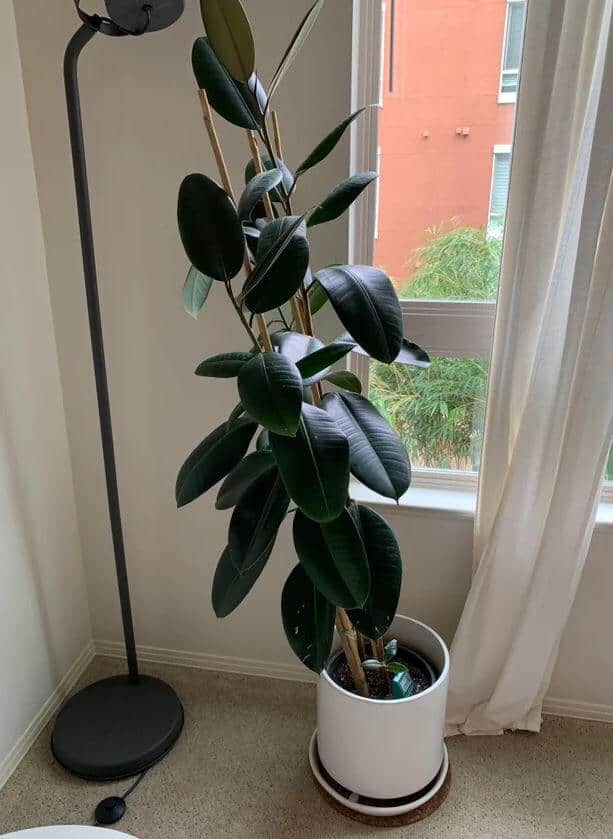
Rubber plants are both expansive and independent in their growth habits. As phototaxic plants, they will adjust their growth to move in the direction of a light source. Since they require generous light to fuel their growth, they will access as much as possible, and this translates into growing in the direction of the light.
They also enjoy growing on other vegetation and are perfectly at home using other trees and large plants as support structures. The more common reasons that your rubber plant may be growing sideways include
- Your plant is suffering from a lack of light. This will stimulate the plant to grow shoots in all directions in the search for more.
- The position of the light source is to the side. If your plant is far from a window or glass door, it will lean and reach toward the window.
- Your rubber plant fell over because it did not have sufficient support such as another tree.
- You pruned a principal growth shoot, so your plant is trying to grow from its sides. Trimming the main stem will send the plant into shock, so it grows from the sides. This may impede your plant from ever-growing upward again.
- Side pruning can also stimulate growth sideways. Trimming your plant laterally should contribute to a bushier appearance.
- You change your rubber plant’s position frequently, moving it around. This can make a difference if your plant is not receiving light from all sides.
- You may have more than one rubber plant growing in the container. This can lead to competition for resources as rubber plants are heavy feeders. One plant may grow branches sideways as a result.
- Your plant may feature an excess of lateral branches.
Fixing a Rubber Tree Growing Sideways
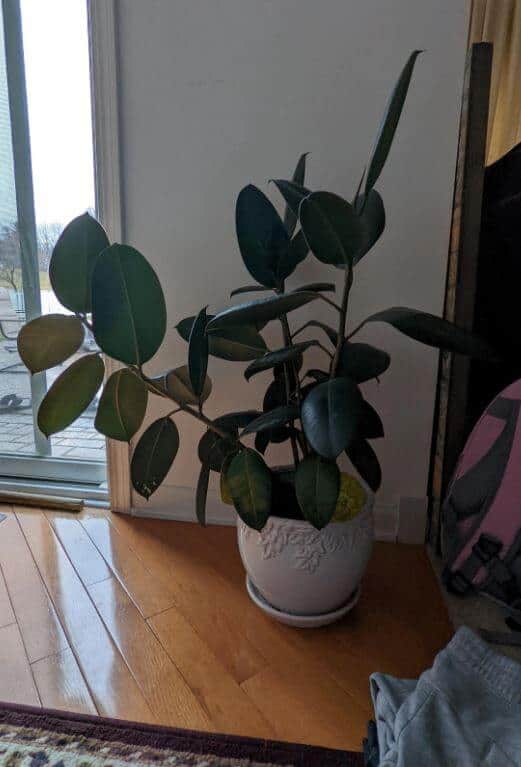
The reasons your rubber tree may be growing sideways are easily remedied. If you cannot position your plant nearer to a window to stop it from reaching sideways, consider adding supplemental grow lights above it to assist your plant in its quest for more light. Make sure you purchase an appropriately sized light for the size of your plant. Small lights for big trees will do little or nothing. Consider placing your plant outside, weather permitting, so that your plant receives sunlight from all sides.
If your Rubber tree has fallen over, consider using stakes for added support. Wooden or bamboo stakes should be more than adequate.
Avoid pruning your rubber plant if it’s not necessary, especially if your plant is in a growth stage. If you have mistakenly pruned off the growth shoot and side shoots are growing outwards, consider training the branches that are growing. Gently bend them in an upward direction and secure them with training wire to stakes. Should the branches continue to point downward or sideways, you may have a light issue as well that needs to be corrected.
A Rubber Plant Leaning Over
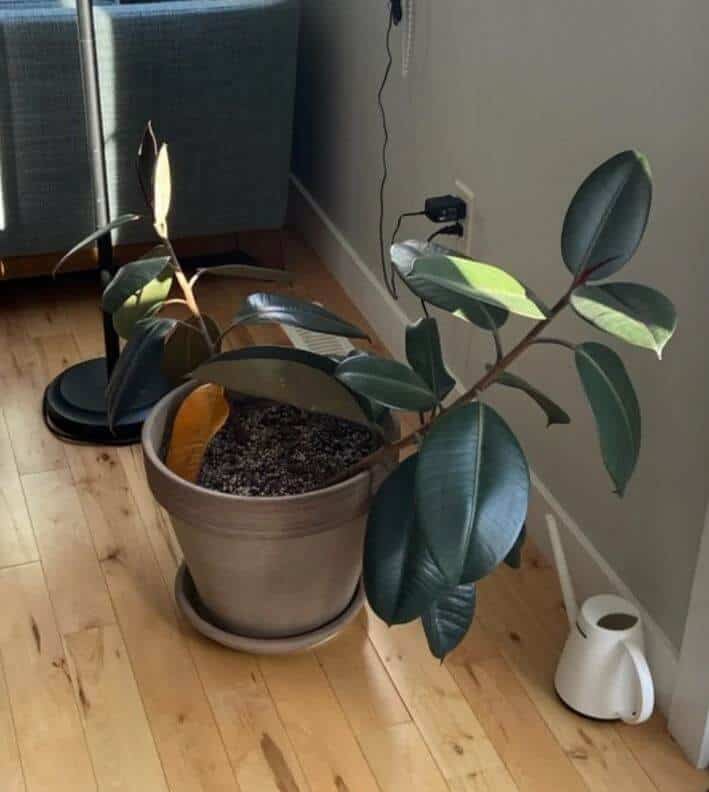
Rubber plants are natural slouchers and will constantly look for support from other vegetation in their natural habitats. They also are very intent on light sources, so if there happens to be a light to the side of your plant, don’t be surprised if your rubber plant gravitates toward it, even with sufficient environmental light.
The rubber plant likes to flop, so rubber plant leaning is to be expected. If lateral branches grow heavier than the principal stem, the plant will lean to the side.
Other causes can include root rot or stem rot which can cause rubber tree leaning.
Why Is My Rubber Tree Not Growing?
The most common reason that a rubber tree shows no growth is a lack of light. If your plant is not near a window, it should be. Light is an essential factor in rubber tree growth.
Other Rubber Tree Problems

Several other problems that can emerge when you cultivate a rubber plant indoors include:
-
Folding leaves
This is generally a watering issue and indicates your plant is thirsty.
-
Curling leaves
Improper watering is at fault here with either too much or too little. This can also be caused by insufficient humidity.
-
Brown or yellowing leaves
This too is caused by improper watering. Either your plant is sitting in water, or the soil is too dry.
-
Brown edges on leaves
Inconsistent watering or excessively strong sunlight will cause edges to brown.
-
Black lower leaves
Improper watering.
-
Leaves have brown spots
This is usually an indication of a fungal or bacterial infection. Fungal infections will be plain brown spots, whereas bacterial infections often feature a yellow halo.
-
Deformed new growth
Deformed foliage can indicate a pest infection or a nutrient deficiency.
This is generally due to shock from changing the plant’s environment.
-
Smaller new growth
This indicates that environmental conditions have worsened for some reason.

